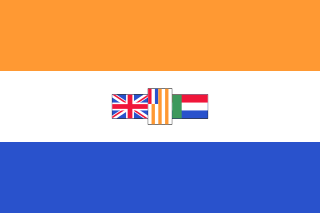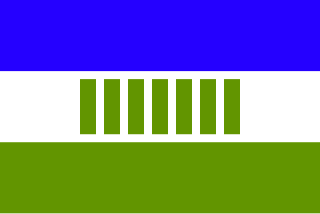Related Research Articles

South West Africa was a territory under South African administration from 1915 to 1990, after which it became modern-day Namibia. It bordered Angola, Botswana, South Africa, and Zambia.

A Bantustan was a territory that the National Party administration of South Africa set aside for black inhabitants of South Africa and South West Africa, as part of its policy of apartheid. By extension, outside South Africa the term refers to regions that lack any real legitimacy, consisting often of several unconnected enclaves, or which have emerged from national or international gerrymandering.

Kaokoland was an administrative unit and a bantustan in northern South West Africa. Established in 1980 during the apartheid era, it was intended to be a self-governing homeland of the Ovahimba, but an actual government was never established, and the territory was administered by the leaders of Hereroland. Like other homelands in South West Africa, the Kaokoland bantustan was abolished in May 1989, at the beginning of the transition of Namibia towards independence.

Bushmanland was a bantustan in South West Africa, intended by the apartheid government to be a self-governing homeland for the San people.

Hereroland was a bantustan and later a non-geographic ethnic-based second-tier authority, the Representative Authority of the Hereros, in South West Africa, intended by the apartheid-era government to be a self-governing homeland for the Herero people.
During part of the South African apartheid administration in South West Africa, when Hereroland was a bantustan, a political representative was appointed by the South African Administration. At first, this position was given to the respective Paramount Chief of the Herero people until in 1980, political representation was decoupled from chieftaincy. The position of the representative of Hereroland was abolished in May 1989 as part of the transition to Namibian independence which was declared in March 1990.

Ovamboland, also referred to as Owamboland, was a Bantustan and later a non-geographic ethnic-based second-tier authority, the Representative Authority of the Ovambos, in South West Africa.
Ovamboland, or Ovambo, was a Bantustan or "homeland" and later a second-tier authority in South West Africa for the Ovambo people during the apartheid period.

Damaraland was a name given to the north-central part of South West Africa, which later became Namibia, inhabited by the Damaras. It was bordered roughly by Ovamboland in the north, the Namib Desert in the west, the Kalahari Desert in the east, and the Windhoek region in the south.

Tswanaland was a bantustan and then later a non-geographic ethnic-based second-tier authority, the Representative Authority of the Tswanas, in South West Africa, in the far central eastern area of the territory around the village of Aminuis. It was intended by the apartheid government to be a self-governing homeland for the Tswana people.

Kavangoland was a bantustan and then later a non-geographic ethnic-based second-tier authority, the Representative Authority of the Kavangos, in South West Africa, intended by the apartheid government to be a self-governing homeland for the Kavango people.

Rehoboth was a homeland and later, a second-tier authority, the Government of Rehoboth, in South West Africa intended by the apartheid-era government to be a self-governing homeland for the Baster people in the area around the town of Rehoboth, Namibia.

Namaland was a Bantustan and then later a non-geographic ethnic-based second-tier authority, the Representative Authority of the Namas, the in South West Africa, intended by the apartheid government to be a self-governing homeland for the Nama people. Namaland comprised an area of 2,156 km2 (832 sq mi) and was to accommodate the estimated 34,806 southern Namas of the South West African territory.

East Caprivi or Itenge was a bantustan and and later a non-geographic ethnic-based second-tier authority, the Representative Authority of the Caprivis in South West Africa, intended by the apartheid government to be a self-governing homeland for the Masubiya people.
East Caprivi was a Bantustan or "homeland" and later a second-tier authority in South West Africa during the apartheid period.
Thimoteus Tjamuaha was the Chairman of the Executive Committee of Hereroland from 1980–1984, a bantustan under the control of Apartheid South Africa. In this position he was the highest representative of his homeland to the South African administration in South-West Africa.
Erastus Tjejamba was the Chairman of the Executive Committee of Hereroland from September 1984 to August 1987 and from October 1987 to February 1988. In this position he was the highest representative of his bantustan to the South African apartheid administration in South-West Africa.
Gottlob Hengombe Mbaukua was the Chairman of the Executive Committee of Hereroland from August 1987 to October 1987 and from February 1988 to May 1989. In this position he was the highest representative of his bantustan to the South African apartheid administration in South-West Africa. The Executive Committees were abolished in May 1989 as part of the transition to Namibian independence which was declared in March 1990.
Rank comparison charts of armies/land forces of apartheid states and territories in Southern Africa.
References
- ↑ Dierks, Klaus. "Biographies of Namibian Personalities, Entry for Constance Kgosimang". klausdierks.com. Retrieved 14 May 2012.